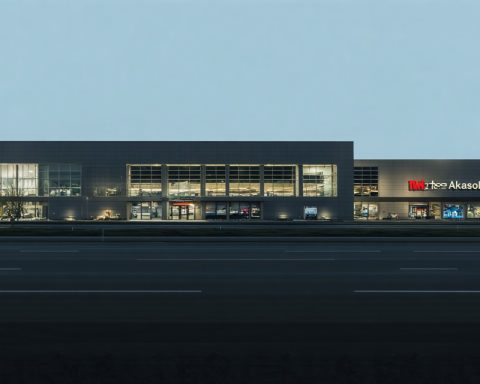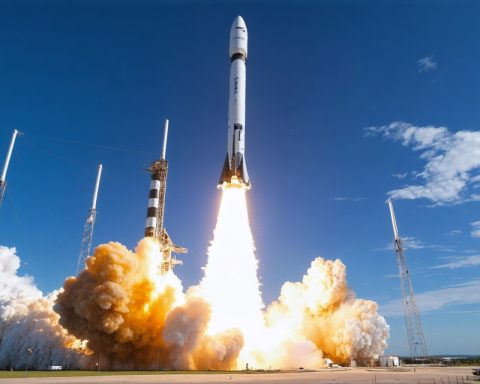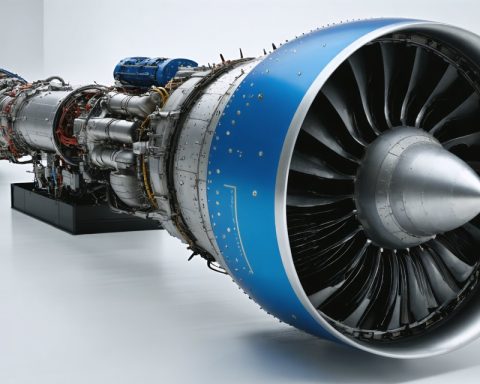- A SpaceX Falcon 9 rocket stage created a striking celestial display over Europe as it re-entered the atmosphere unexpectedly, particularly over the English countryside and Berlin.
- Metallic debris from the rocket stage descended near Poznań, Poland, sparking curiosity and safety concerns among locals and authorities.
- The debris was linked to a recent SpaceX mission carrying Starlink satellites, with operational challenges leading to its unintended return.
- The Polish Space Agency is investigating the debris to confirm its origins and ensure public safety.
- This incident highlights the importance of managing space debris and the pathways of our technological advancements as the space industry continues to grow.
Just before dawn broke over Europe on Wednesday, a spectacle unfolded in the sky as a SpaceX Falcon 9 rocket stage blazed across the heavens. This unexpected celestial light show captivated countless early risers, transforming night into day with its fiery descent. Across the rolling countryside of Lincolnshire in England, curious locals snapped photos of the phenomenon, eager to capture this cosmic event as it erupted across the horizon.
This fiery visitor was no ordinary shooting star. It was a remnant from a mission launched earlier this month, an upper stage of a Falcon 9 rocket destined for a controlled descent but instead gracing European skies in an unscheduled encore. As the object burned brightly over Berlin and beyond, it rained down metallic remnants near cities like Poznań, Poland, leaving a puzzling trail of debris and intrigue.
Authorities responded promptly. In a quiet corner near Poznań, workers arrived to find a substantial hunk of metal resting ominously on their premises. Nearby, in the eerie silence of a forest, a second piece was discovered, prompting stares from astounded locals. Each find stirred curiosity, giving rise to questions: What were these objects, and how had they traversed space only to settle here?
Experts indicate that these fragments were part of a SpaceX mission carrying Starlink satellites. Challenges in the mission’s execution led to this unexpected return. The Polish Space Agency analyzed the debris, aiming to confirm its origins while ensuring public safety.
This event underscores a crucial message about our expanding cosmic ventures: when ambition launches us skyward, we must remain vigilant about the paths our technology may trace back to Earth. As the space industry rapidly evolves, safeguarding both our sky and ground from wayward rocket parts becomes imperative for future missions.
Unveiling the Spectacle: SpaceX Rocket Debris Illuminates European Skies
The Phenomenon Explained
The celestial event witnessed across Europe recently was caused by an upper stage of a SpaceX Falcon 9 rocket, which re-entered the Earth’s atmosphere in an unscheduled display. Originally, this rocket segment was meant for a controlled descent after delivering Starlink satellites into orbit, but instead, it created an unexpected light show, followed by a trail of debris.
Real-World Use Cases
1. Space Debris Monitoring: The situation highlights the importance of tracking space debris. Organizations like NORAD and the European Space Agency (ESA) continuously monitor space objects to predict re-entry paths and ensure public safety.
2. Technological Advancements: Such events provoke the development of better tracking technologies and the designing of rockets with improved deorbit mechanisms to control debris re-entry.
3. Public Engagement: Incidents like these can serve as educational opportunities about space missions and the technology behind them, increasing public interest in space exploration.
Market Forecasts & Industry Trends
The space industry is rapidly evolving, with companies launching more satellites for various applications, from broadband coverage to scientific exploration. The estimated global space economy could grow to over $1 trillion by 2040 (Morgan Stanley). This growth brings with it challenges, such as the increased accumulation of space debris and the need for sustainable practices.
Controversies & Limitations
– Space Debris Concerns: The increasing presence of space debris poses threats to both satellites and space exploration missions. Solutions such as active debris removal are being developed but are costly and complex.
– Uncontrolled Re-entry: While controlled re-entries are standard procedure, incidents like this show that anomalies can happen, raising safety and liability concerns.
Features, Specs & Pricing
– Falcon 9 Rocket: Known for its reusability, the Falcon 9 is a workhorse in the current commercial space industry, characterized by:
– Height: 70 meters
– Diameter: 3.7 meters
– Payload to Low Earth Orbit (LEO): Up to 22,800 kilograms
– Price per launch: Approximately $67 million
Pros & Cons Overview
Pros:
– Establishes satellite internet capabilities like Starlink, revolutionizing global connectivity.
– Reduces launch costs with reusable technology.
Cons:
– Increases space debris risks.
– Occasional uncontrolled returns can cause public concern.
Existing and Future Predictions
With the pace at which the space industry is advancing, one can predict stricter regulations and improved technologies to minimize space debris and uncontrolled re-entries. Companies are likely to innovate further in spacecraft design to ensure public safety and sustainability in space missions.
Actionable Recommendations
– Awareness & Education: Engage with space exploration educational resources and apps to understand the impact of such celestial events.
– Advocacy: Support policies aimed at reducing space debris and enhancing space safety measures.
For more information on space missions and satellite technology, visit SpaceX and ESA.
This unexpected yet captivating event reminds us of the profound impact human technology can have on our environment and the cosmic stage we play on. As we continue to push the boundaries of space exploration, it becomes crucial to balance ambition with responsibility.








